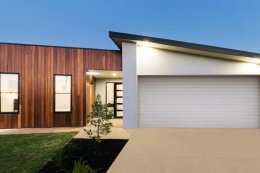
The following is taken from David Koch’s My Money Digest – 9 February 2024
A hefty dose of RBA financial therapy
A tumultuous week for finance nerds like me who for years have excitedly marked the first Tuesday of the month in our calendars as “Reserve Bank Board Meeting Day”. This week marks the last RBA board meeting on the first Tuesday of the month… the next one will be Tuesday March 19 as the RBA moves to eight meetings a year.
Keeping interest rates on hold at 4.35 per cent was widely expected, but there were some interesting changes in the attached Statement on Monetary Policy which updates the RBA’s economic forecasts.
It has based their new forecasts on the assumption that official interest rates will stay the same until the end of June and fall to 3.9 per cent by the end of the year.
So, the RBA is forecasting a 0.4 per cent cut in rates over the second half of the year.
When it comes to inflation the RBA is now assuming a fall in the annual CPI to 3.3 per cent by June, but then it reckons it will take another 18 months to dip down to the 2-3 per cent target range. That to me seems a long time for it to dip another 0.3 per cent.
Based on that assumption the RBA now expects the economic slowdown to be sharper than it expected. It is now forecasting economic growth in the June quarter to be 1.13 per cent a year… slower than the 1.8 per cent it previously expected.
The economic growth forecast for the end of the year was also lowered to 1.8 per cent, while the forecast for late 2025 and June 2026 were kept the same at 2.4 per cent.
The RBA now expects unemployment to rise from the current 3.9 per cent to 4.4 per cent by June 2025.
But remember it’s not just economic data and forecasts that the RBA needs to be good at. It also needs to be the country’s financial therapist. They try and get into our minds to influence our behaviour because that, in turn, affects the economic data.
That’s why the RBA constantly “threatens” us with the possibility of higher interest rates. That way we don’t start thinking this is the peak of the interest rate cycle and go out shopping to celebrate, which will, in turn, feed into inflation.
That’s why even this week we got told higher interest rates “cannot be ruled out”. It’s why in the Bullock press conference she said the economy and rates “are finely balanced”.
The fear of rising interest rates keeps our behaviour in check.
Why Australia is so sensitive to interest rate changes
In the Michele Bullock press conference she referred a couple of times to how the US has lifted interest rates further than Australia. Sort of giving the impression Australians haven’t been hit as hard.
I have to say, that’s a bit misleading.
And that pain comes through pretty quickly because so many Australians are on variable home loans.
Here’s the big difference: most Americans are on long-term fixed home loans (it’s their cultural tradition), so when an interest rate rise comes through it basically only affects those taking out a new loan and not an existing one… because they’re fixed.
The interest rate increases have been just a blip for US home loan borrowers but have delivered a massive hit in Australia.
The biggest interest pain is felt by home loan borrowers who traditionally have the largest debt and therefore the biggest mortgage repayments. A small increase in interest rates hurt a lot.
My challenge to the government to ensure you get the best deal on your home loan
Interest rates may be on hold after this week’s RBA board meeting but thousands of homeowners are still paying more for their home loan because they have fallen onto so-called “back-book” rates. Back-book rates are where existing loyal customers are being charged a higher interest rate than new “front-book” customers.
That difference is as much as 2 per cent, which is the equivalent of eight RBA rate increases of 0.25 per cent.
The government needs to prioritise reforms that could help homeowners save money on their mortgages, as any further delays could end up costing people thousands.
In December, the government announced it would review the Australian Competition & Consumer Commission (ACCC) home loan price inquiry recommendations from its 2020 review of the mortgage process.
While it’s great to see the issue finally getting some attention, urgent action is needed to make up for slow progress over the past four years. There’s a significant difference between what new customers and old customers pay and right now not enough is being done to help those people onto better rates.
And the gap between advertised and back-book rates is hurting even more since most of the banks have passed on the RBA’s 13 rate hikes in full. One of the big banks has a net interest margin of 2.31 per cent… now that’s approaching the size of the 3 per cent serviceability buffer banks stress test you for, so that’s a huge discrepancy.
A Compare the Market survey of homeowners in September 2023 found that 18 per cent did not know their interest rate while approximately 45 per cent had been with the same lender for more than five years.
If the ACCC’s recommendations are mandated homeowners could benefit from:
- Speedier discharge times, with a maximum of 10 business days to complete the process.
- A streamlined process to refinance that isn’t as complicated or confusing as the current one.
- Continued monitoring of competition and prices in the home loan market.
Compare the Market analysis of some of the rates available from the big four banks showed the average difference between front-book and back-book rates is a massive 1.96 per cent.
Therefore, a person with an owner-occupier $750,000 loan could be saving $1,008 a month when they switch from a rate of 8.54 per cent to 6.58 per cent.
| Mortgage size | The difference between variable rates in the market | ||
| Minimum monthly repayments on variable P&I rate of 6.58% | Minimum monthly repayments on variable P&I rate of 8.54% | Difference in monthly minimum repayments | |
| $500,000 | $3,187 | $3,859 | $672 |
| $600,000 | $3,824 | $4,631 | $806 |
| $750,000 | $4,780 | $5,788 | $1,008 |
| $900,000 | $5,736 | $6,946 | $1,210 |
| $1,000,000 | $6,373 | $7,718 | $1,344 |
| Monthly repayments do not include any reduction in the mortgage balance over time. These calculations assume: An owner-occupied variable interest rate of 6.58% compared to 8.54% p.a; principal and interest (P&I) repayments; the loan term is 30 years; and there are no monthly fees. | |||
With the difference in rates potentially costing homeowners thousands, the government should be doing everything in its power to make refinancing easier.
The decision to switch and save ultimately lies with the borrower, but the government needs to make this process easier by mandating a standardised discharge form and putting a 10-day deadline on the process.
Right now, lenders are allowed to drag their feet to retain business, but these reforms could help drive competition in the home loan market.
Borrowers need to be sceptical about their current interest rate and use websites like Compare the Market to get a better idea if it is competitive.
I’d urge anyone who’s been with the same bank or lender for the past few years to be a bit inquisitive, do some research, and see if they’re actually getting a good deal. If there’s a big difference between your rate, and the ones that are advertised, it’s probably time to walk.
Where are the most affordable properties?
Property values in most capital cities continue to post solid gains, much to the dismay of many buyers being priced out of the market. As I’ve discussed before, the rise in values is being driven by a shortage of new properties coming on line and increased demand from migrants and renters who find it cheaper to own now than rent.
So real estate giant Ray White has scoured its database for where affordable options are currently available . They’ve looked at the number of sales under $750,000 for houses, and $500,000 for units.
Perth has a lot of affordable housing. Baldivis, Armadale and Gosnells in Perth’s south, all had more than 400 sales under $750,000 last year. In contrast, no suburb in Sydney offered more than 40 sales a year for under $750,000.
In the same cities, Melbourne appears to have sold the most affordable units. Melbourne often makes the most sales out of any capital city, made up largely by the number of units in the inner city. A massive 871 units were sold in Melbourne CBD last year for under $500,000.
Perth appears to offer many affordable units as well as houses, the second most out of all capital cities. Perth has seen strong price growth in the last 12 months, which makes such a strong showing a potentially temporary situation.







